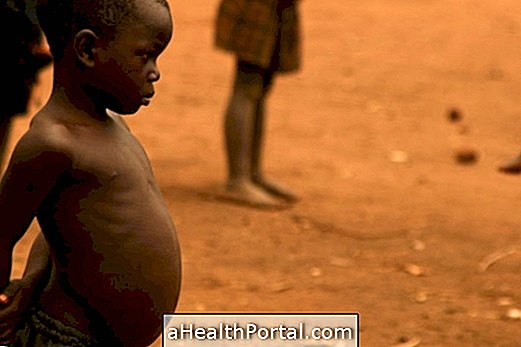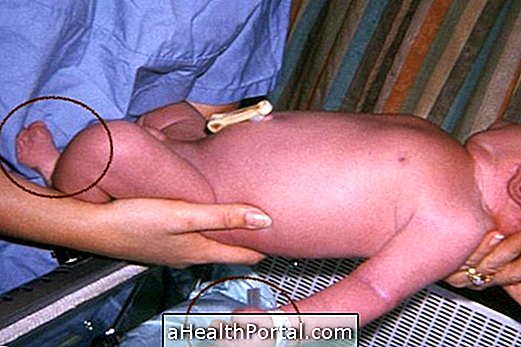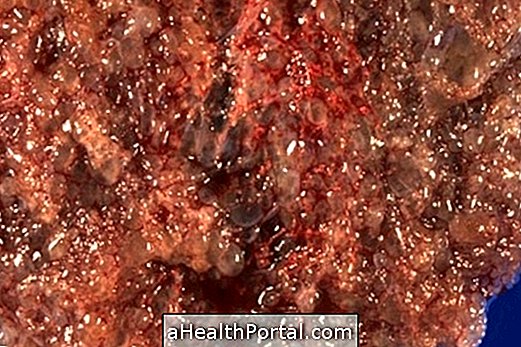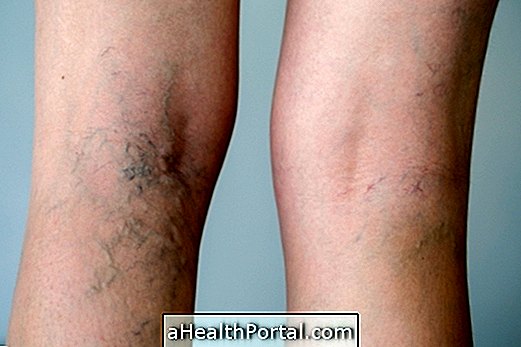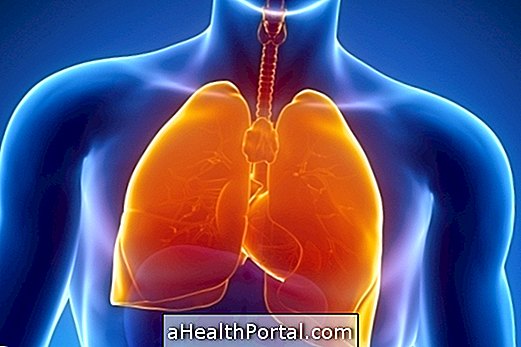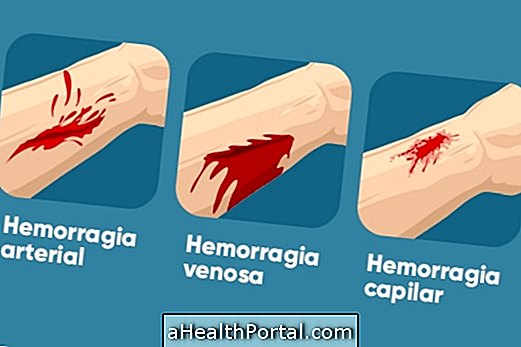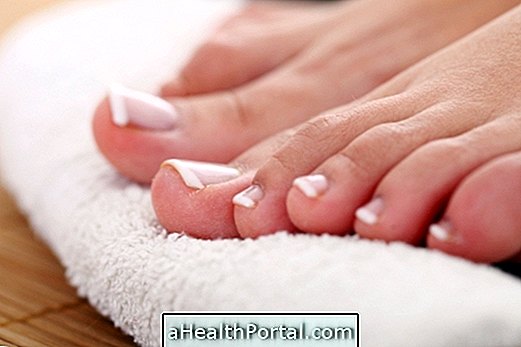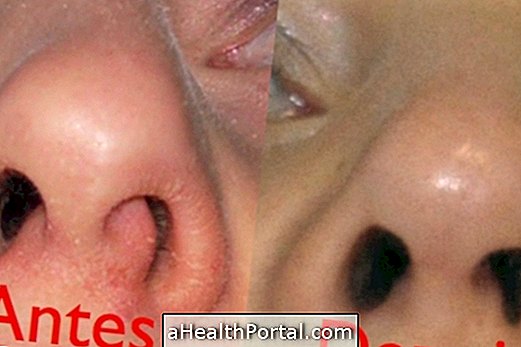Noma is a disease that usually manifests itself in the poorest countries, due to poor hygiene and poor nutrition, which causes the destruction of the mouth and face, beginning with the appearance of a small wound inside the mouth that is spreading to the rest of the tissues of the mouth and bones.
This disease is still untreated, causing death in most cases, unless it is detected early and the infection can be stopped with good hygiene and administration of antibiotics.

What are the signs and symptoms
The first signs and symptoms that usually appear in people with this disease is a small wound inside the mouth, usually in the gingiva, that is spreading, giving rise to a necrotizing ulcerative gingivitis.
The Noma spreads very rapidly, leading to destruction of the tissues and bones of the mouth and eventually perforating the hard tissues and skin of the face, leading to death, usually caused by sepsis. There are several stages of the disease that are listed in the following table:
| Phase of the disease | Signals and symptons |
|---|---|
| Warning Sign: Simple Gingivitis | Red and swollen gums that bleed to the touch or while brushing. |
| Acute necrotizing gingivitis stage | Bad breath, painful wounds in the gums, which bleed spontaneously, excess saliva production. |
| Edema stage | Swelling of the face, difficulty in eating, bad breath, spread of wounds and pain to the lips and cheeks, high fever, increased saliva and anorexia. |
| Gangrenous stage | Destruction of the tissues of the mouth, presence of a well delimited lesion with black center and destroyed, leaving a hole in the face, bluish discoloration on the cheeks and lips, difficulty eating, piercing the cheek with exposure of teeth and bones and anorexia. |
| Healing stage | Constriction of the jaws, loss of teeth with exposure of the bone structure, difficulty eating and beginning of healing |
| Sequel stadium | Disfigurement, difficulty to move the mouth and to speak, loss of teeth, difficulty eating, saliva discharge and displacement of teeth. |
Possible causes
It is still unclear which microorganisms responsible for causing this disease, but it is known to spread due to poor oral hygiene, malnutrition and weakening of the immune system, being more common in children between 2 and 6 years old.
Other causes that may be at the origin of the Noma are the existence of other diseases such as measles, malaria or HIV infection, for example, that make children more susceptible to the spread of the disease.
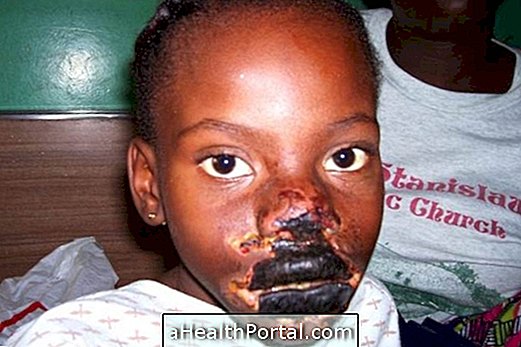
How is the treatment done?
There is still no treatment for the advanced disease and therefore it is very important to make an early diagnosis, as soon as the first symptoms appear.
Thus, when observing the mouth of the child, if it has swollen and red gums, with bleeding to the touch or during the brushing, it can be sign of Noma beginning and in these cases, one must reinforce the oral hygiene, boiled or an antiseptic elixir, make a daily diet with greater amount of protein and make supplementation with Vitamin A.
In a phase of acute necrotizing gingivitis, the aforementioned treatment should be reinforced with nutrient and antibiotic supplementation such as amoxicillin and metronidazole and administering analgesics and anti-inflammatories such as aspirin or paracetamol.
If the child enters the edema, gangrenous, or healing stage, antibiotics should be given at higher doses, such as amoxicillin and clavulanic acid + gentamicin + metronidazole, slow intravenous or ampicillin + gentamicin + metronidazole, slow intravenous route. It is also advisable to use a chlorhexidine elixir 0.2%, 3 times a day. In the gangrenous stage, ketamine may be administered intramuscularly to reduce pain.
In addition, if possible, the child may still daily flush with a chlorhexidine elixir, take folic acid, iron, ascorbic acid and vitamin B supplements, treat pre-existing illnesses, provide adequate nutrition, treat correcting dehydration, performing deworming and controlling bleeding. In the later stages, if the child survives, it is advisable to perform physiotherapy so that she can open and close her mouth, extract loose teeth, perform facial reconstruction surgeries and provide psychological support.
